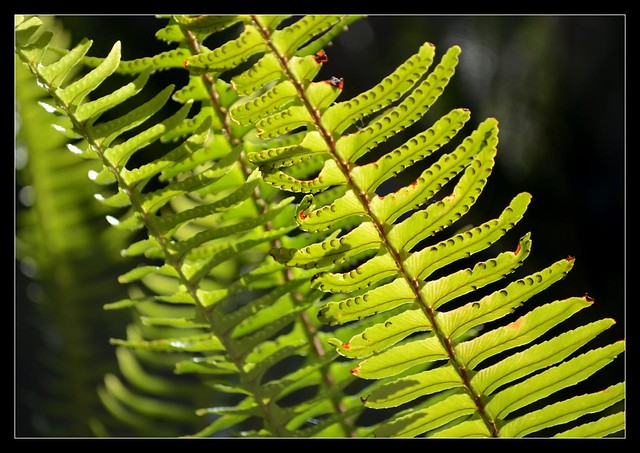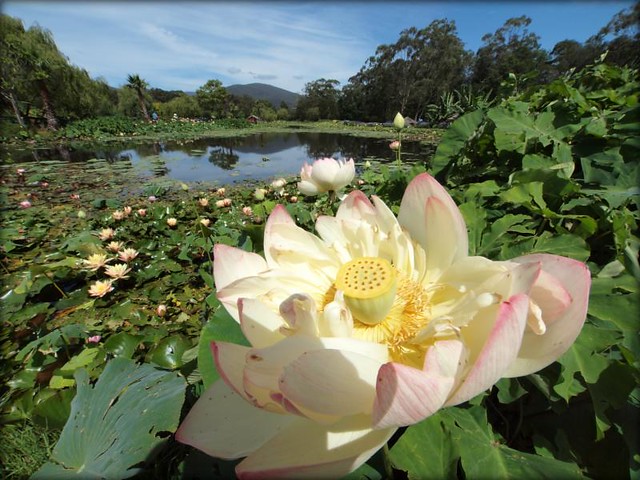Choosing the Brand (from the DSLR / Interchangeable Lens category)
Revised and updated: December 2011
The individual camera brands have personalities - bear that in mind when you are befuddled by tables and comparison matrices of blow by blow feature lists.
Canon
Canon produces the most cameras worldwide. Pros shooting Olympics, Getty Images, in war zones, in sports, use them. They have a full range of product from small compact point and shoots to the big DSLRs with honking big, white, expensive "L" lenses. If you are a pro or wanna be a pro or want people to think you are a pro, it seems like one of two brands to embrace. If you want the safety and conservatism of being part of a large tribe, this is the brand for you. Regardless of whether you bought a hundred dollar Canon camera, you can say - "I use this brand, hey!"
But, as in all well run and structured religions, let it be known that Canon has circles - the pros, the wannabes, the want-to-be-known-as, the nerd shooter and the family shooter. And so, you will be offered competent cameras and lenses. Doesn't mean that your $200 lens is the equivalent of an "L" lens worth ten times more. It isn't.
Canon DSLR bodies have bulk and volume. At the low priced end, they can feel hollow (less dense). At the lower end too, I find the right hand grip a little odd, my hands don’t curl around the grip comfortably. But that’s me. The menus seem to use more icons and less words.
Canon changed their lens mount some time back, the old one was called FD and the current one is called EF / EF-S. Of course FD lens owners were not happy but that was some time ago. Canon bodies don’t have an internal AF focus assist lamp – so in dim light, the built-in flash blinks in a beserk manner to light up the near subject.
Canon does put attention to their non DSLR compacts and bridge cameras. They have some individuality and features. There are firmware hacks (CHDK) to enable features that are not normally available in these cameras.
Nikon
Nikon has the next largest market share. I confess to having a soft spot for them but I was let down by the first Nikon I ever owned, a Nikon 775 compact 3x digital zoom camera. Nikon does have a range of non DSLR compacts and bridge cameras but mostly the passion to make them stand out isn’t the same as Canon.
Now, the Nikon DSLRs go head to head against the Canon DSLRs and are used by pro photographers. Their lenses are good too, however, Nikon stove pipe lenses are black not white. Lowest range Nikon DSLR bodies do not have an AF motor in the body (for old lenses) and cheaper bodies are said not to meter the scene with old lenses in a convenient way – a sign of product differentiation. This is at odds with the pride that the Nikon physical mount has changed little and old, old lenses fit new, new bodies.
I like the Nikon DSLR grip, even the cheapest ones, and the cheap bodies feel dense and compact. The feel of solidity and denseness is a Nikon design ownership aesthetic.
Either brand will do if you are into the "I belong to heap big tribe" attitude.
And now, the other small tribes
Firstly why bother with a brand that is not in the top two in market share?
- You like to root for the underdog.
- You want new features, earlier. They try harder – they introduce more innovative features, earlier. Flip Twist LCDs. Auto HDR. Sweep Panorama. Smaller and lighter gear, More attractive out-of-the-camera JPEGs. Mirrorless or non swinging mirrors. The list goes on.
- You eschew conservatism, financial and asset safety and are willing to take risks
Sony
Sony is the next DSLR brand to discuss. Originally, the DSLR factory was Minolta but Minolta got sued heavily by Honeywell over a bun fight about who invented Auto Focussing and amongst other things, Minolta merged with Konica and then the merged entity lost interest in high risk, low returns camera market, so sold to Sony.
Sony DSLRs of course have very strong innovative features - Sweep Pano, Automatic HDR, Translucent Mirrors and so on. Mirrorless. And with Sony's money bags, they can afford to launch several similar models at the same time and multiple lines of cameras - Full Frame, classic APS-C with mirrors, translucent mirrored SLTs and mirrorless NEX. They can afford to overlap market segments – compete with themselves. And ally with Carl Zeiss (lenses).
Pentax
Pentax has been a reliable, middle performer brand. They have moments of brilliance. They make good, respectable bodies. Their range of single focal length lenses / pancakes are famous. They’re cost effective. Competent. And now they come in scores of shades and colours. They have a long history of being “there”. Unfortunately, it’s hard being a small company. Hoya bought Pentax and then sold Pentax to Ricoh.
Olympus
Olympus is a maverick. Has been, Will be. Somehow Y. Maitani has retired but the legacy of his boldness is still in the company’s culture. They are the essence of the Japanese bento box – delicately made, well presented. Small. Because they don’t have a large tribe in tow, they have to be and are agile. Risk takers – again, if you are that size, you take the risk or become lost in the herd of tribesmen from other tribes. Who else would come out with a Mirrorless Interchangeable Lens Camera first? Who would take the decision to voluntarily retire the bulk of their DSLR line ahead of time? Their last and remaining DSLR model is the E-5. They are fully focussed on designing and making their PEN series of interchangeable lens mirrorless cameras.
However, the management has been in disgrace – they have carried out all kinds of financial and management misdeeds. We hope the company makes it.
Panasonic
Panasonic and Sony are rivals in the TV and appliance space. In the photography space, Sony has the lead but Panasonic is not weak. Panasonic have established credibility in the compact and bridge categories. They have allied with Leitz (Leica) as Sony has allied with Carl Zeiss.
In the DSLR space, Panasonic allied with Olympus but were quickly dissatisfied with progress in that category in terms of sales achievement. Panasonic are more comfortable in a category where there is more electronics than mechanicals so they jumped into the Micro Four Thirds mirrorless category with Olympus as collaborators.
How about the different Types of Cameras?
I’m not a camera taxonomist and I now look more at Interchangeable Lens Cameras (both Mirrored i.e. DSLR and Mirrorless)
Let’s start from the top.
The Pro DSLR
Firstly we have the big bodied 24x36mm sized sensor “full frame” DSLRs. Expensive. Big. Heavy. Robust. Professional. Chatter faster than a machine gun. Takes equally expensive, big, heavy lenses. Why?
- Because you need professional quality equipment. I didn’t say anything about the often misused phrase, image quality. I said high quality equipment. Weather sealed.
- You have more cash than you know what to do with.
- You like carrying something weighty.
- You take out insurance and are not worried about getting mugged or robbed. Heck, you could even bash out the mugger’s brains with that D3s.
The Enthusiast / Premium DSLR
- You wish you had the cash for a Pro DSLR but don’t.
- You want a second body for your Pro DSLR.
- You want a really good high ISO performance.
- You want a sizeable, dense body
- You want dual dials and big viewfinders, big, detailed LCD screens and lots and lots of mod cons. You want gear that performs.
- You want to be one up on the guy next door.
The Entry Level DSLRs (or any DSLR for that matter)
- You want to “take your photography to the next level” and you see so many people with those black DSLRS.
- You want to shoot “manual” whatever that means.
- But you’re “happy to use iAuto or SCENE modes for the time being”
- You’re dissatisfied with your previous “point and shoots”
- You think a DSLR will make you a better photographer – after all, if you are the constant factor, surely throwing money at a better camera will make you take better pictures, right?
- You want “bokeh” whatever that is.
- You want to take shots of kids in motion in dark, dim rooms without flash. Or heck, just kids in motion, they never stay still and your “point and shoot” just shows the back of the leg in a blur.
- You are willing to step down from having a big zoom range to a paltry 3x or less zoom in a camera and lens package that costs more. Oh, by the way, how do you measure a DSLR lens when you want to compare it with your current insane 36x zoom?
- You think these entry level DSLRs are soooo good, why on earth would you fork our more dough? After all, the sensor is the same, right?
The Mirrorless Interchangeable Lens Camera
- You want a DSLR but you don’t want a DSLR in bulk and weight and clumsiness.
- You don’t mind paying more in the long run for this smaller camera than you would for an entry level DSLR – such new MILCs and Lenses are new, risk taking product – the companies need / want to make a good buck before the big tribes spoil the profits.
- You are willing to let go a little of that bokeh or use a manual-everything lens to get it.
- You’re ok with one, maybe two settings worse graininess or lower ISO ceiling.
- You’re ok with less choice of lenses because the lenses you want to use now or eventually are already in the catalogue.
- You’re ok with a slight hesitancy before the shutter clicks.
- You’re gonna try harder for shooting birds and sports.
- You don’t mind not having an optical viewfinder or even no viewfinder sometimes. And you enjoy Transformer type gadgets.
The Ultrazoom / Bridgecam
- You don’t think all this interchangeable lens business is worth the money or the trouble.
- You want a real zoom. I mean 40x, is that too little?
- You want maximum bang for buck.
- You’re sure that your sensor isn’t small and besides, most of your shots are in bright sunny seaside towns of Devonshire
- You are a “point and shoot”. Really,
- You like Kodakcolor, Fujicolor or Panasonic Color (thought I was gonna say Panacolor, didn’t you)
- You know how to fake bokeh with software. The real thing is over-rated.
- You haven’t got the time to futz around on a tourist trip. Wife and family aren’t gonna wait for you to set up a shot.
The LX-5, ZX-1, S95 class of compact cams, with good image quality
- You want a real compact cam. I mean, have you seen one of those huge MILCs?
- You reckon the image quality is good enough.
- You don’t mind a 3x or 5x maximum zoom. Really.
- You like deep Depth of Field. Bokeh is for the birds.


